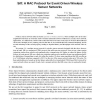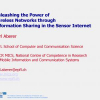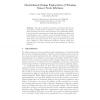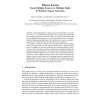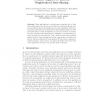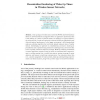EWSN
2006
Springer
15 years 11 days ago
2006
Springer
Nodes in sensor networks often encounter spatially-correlated contention, where multiple nodes in the same neighborhood all sense an event they need to transmit information about....
EWSN
2006
Springer
15 years 11 days ago
2006
Springer
Abstract. Sink mobility creates new challenges for several sensor network applications. In mobile sink environments, each sink must propagate its current location continuously, thr...
EWSN
2006
Springer
15 years 11 days ago
2006
Springer
Abstract. Sensor network devices have limited battery resources primarily consumed by radio communication. Network nodes play different communication roles and consequently consume...
EWSN
2006
Springer
15 years 11 days ago
2006
Springer
Abstract. We propose a lightweight localisation approach for supporting distance and range queries in ad hoc wireless sensor networks. In contrast to most previous localisation app...
EWSN
2006
Springer
15 years 11 days ago
2006
Springer
EWSN
2007
Springer
15 years 11 days ago
2007
Springer
This paper presents two lifetime models that describe two of the most common modes of operation of sensor nodes today, triggerdriven and duty-cycle driven. The models use a set of ...
EWSN
2007
Springer
15 years 11 days ago
2007
Springer
Abstract. This paper introduces Crankshaft, a MAC protocol specifically targeted at dense wireless sensor networks. Crankshaft employs node synchronisation and offset wake-up sched...
EWSN
2007
Springer
15 years 11 days ago
2007
Springer
Initial deployments of wireless sensor networks (WSNs) were based on a many-to-one communication paradigm, where a single sink collects data from a number of data sources. Recently...
EWSN
2007
Springer
15 years 11 days ago
2007
Springer
Many applications in wireless sensor networks rely on data from neighboring nodes. However, the effort for developing efficient solutions for sharing data in the neighborhood is of...
EWSN
2007
Springer
15 years 11 days ago
2007
Springer
Duty-cycling in wireless sensor networks (WSNs) has both beneficial effects on network lifetime and negative effects on application performance due to the inability of a sensor to ...
